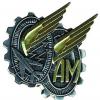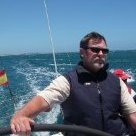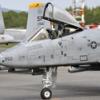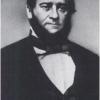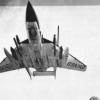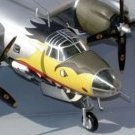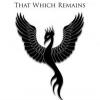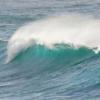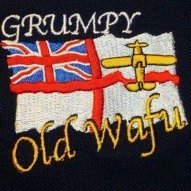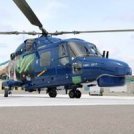Leaderboard
Popular Content
Showing content with the highest reputation on 14/02/17 in all areas
-
Hi all, Here is one of three Eduard MiG-21s I've just finished. This is their 1/48 MiG-21bis kit with Begemot stencils and main decals and finished in Mr Color 8 Silver. This was from the Weekend boxing with a Cold War Studio resin nose added. Full write up at https://jonbryon.com/eduard-148-mikoyan-gurevich-mig-21bis-fishbed-l/. Comments welcome, and thanks for looking. Jon14 points
-
14 points
-
Hi all, Here is one of three Eduard MiG-21s I've just finished. This is their 1/48 kit with Begemot decals and finished in Mr Color 8 Silver. This was from the ProfiPak boxing, although there's a lot of PE I did not use. Full write up at https://jonbryon.com/eduard-148-mikoyan-gurevich-mig-21sm-fishbed-j/. Comments welcome, and thanks for looking. Jon14 points
-
Doing this model I experienced mild disappointment Hasegawa. The model is a nice fit, but when it came to the red cabin, I realized that is not the best cast. On the windscreen are not nice Bases were defined, and the whole cabin was slightly twisted. Therefore I had a big problem that I install properly. Better than I could. The plane on the shelf looks quite correctly, while the camera shows the error. Here's the picture:13 points
-
To follow on from me MB2, I give the assembled ladies and gentlemen my in service Bristol 135. Magna kit straight from the box and decals from the spares box. I honestly can't remember what squadron she's with, but then again, she's a 2007 build.13 points
-
Hi there, this is my old 1/72 F-5A from Italeri. I opened the gun bay and scratched build the M39 from hypodermic needles and small pieces of plastic. I also used a resin seat to add realism to the cockpit. Base is from Coastal Kits. Many thanks for looking.13 points
-
Hi Everyone, Thought I`d show you some pic`s of my very latest effort, yet another attempt at making Matchbox`s finest into something resembling a `Fat Faced Spad` Finished to represent an A-1E of the 602nd Air Commando Squadron, based at Bien Hoa Air Base, South Vietnam in the early/mid 1960`s Made quite a few improvements, including: widening the propeller blades, reshaping the cowl front, ignition harness, vent on the fin leading edge, wing fences at the wing trailing edge,...... steps on the fuselage, static whips on the rudder, much work on the undercarriage and wheel wells, tarted the seats up, a little detail in the `blue room`, aerials, made a windscreen wiper... and cowling shutters ( that you can barely see ). All were made from scratch, I did get an old Monogram one with the intention of robbing it, but decided to build it instead ( coming soon !) the weapons all came from the stash and I tried to recreate a fairly common load for the plane and time frame The decals came from Caracal Decals set CD48046 Hope you enjoy, thanks for looking Cheers Russ12 points
-
Hi all, Here is one of three Eduard MiG-21s I've just finished. This is their 1/48 MiG-21R kit with Begemot stencil decals, homemade bort numbers and finished in Mr Color 8 Silver. This was from the Weekend boxing. Full write up at https://jonbryon.com/eduard-148-mikoyan-gurevich-mig-21r-fishbed-h/. Comments welcome, and thanks for looking. Jon12 points
-
Hi This is my last kit from Special Hobby. This B-18 was quite easy to build except around the engine cowlings which are different depending of the chosen type. As a pre-war era aircraft this one is clean. She is from 7th Bombardment Group, Hamilton Field, California 1938. She should be published in Model Airplane International. Patrick11 points
-
I had started this build some time ago and it is a combination of the Special Hobby best bits from a PP Aeroparts multi media kit that I have burried away. As I wanted to do the Target Tug Mk6 version I have also stolen the tug winch and various other relevant bits which are included in the very comprehensive PP kit. One of the first things that I noticed was that the Special Hobby prop blades and spinner, I don’t believe they are the correct shape. Those in the PP kit are cast resin and white metal blades and in my opinion a much better representation of the real aircraft. Anyway after way too long in the cupboard of doom I have resurrected and completed the build. Special thanks to Steve Long for some invaluble detail shots of their aircraft, certainly is a bonus to be able to connect with such knowledgable resource, – much appreciated sir.11 points
-
When in July of 1937 China's Nationalist Party government resolved on war in the face of Japanese military action near Peking, the Curtiss Hawk III was the chief fighter plane of the Chinese air force. The first Chinese fighter pilot to shoot down a Japanese aircraft, Colonel Kao Chi-hang, did so from the cockpit of a Curtiss Hawk III biplane. How the Curtiss Hawk III came into being, and came to its prominent position in Nationalist China's air service, is a strange and tangled tale. In the late nineteen twenties, Curtiss modified the Army's 'Falcon' attack plane for the Navy and Marines, producing the flamboyantly named Helldiver, a true dive bomber, and one of the earliest. In 1932, Curtiss presented the Navy with a single seat machine, the F11C-2, capable of fighter operations and of dive-bombing, with the same 500lb load the 'Helldiver' carried, and able as well to undertake scouting duties with a large external fuel tank fitted in place of bombs. As this was going into production, the Grumman company won a Navy contract for a two seat machine with retracting landing gear and an all-metal frame, which out-performed the Curtiss single-seater. The Navy wanted something similar from Curtiss, and an early producton example of the F11C-2 was pulled for modification, fitted with wings framed in aluminum, and with an arrangement in which its landing gear retracted manually into two 'lobes' extending down on either side near the nose. This last gave the resulting aircraft a quite distinctive profile, as well as a ventral channel on its center-line where a large bomb or fuel tank could be carried. This was accepted by the Navy as the BF2C-1, and the first production examples were delivered near the end of 1934. There were some difficulties with the landing gear, and the ventral channel disturbed the flow of air to the elevators and rudder when a bomb or tank was carried on the center-line rack. These things were fixed readily enough, the latter by a venturi ring fitted between the 'lobes' at the front of the ventral channel. But the great problem was that at normal cruising speeds, the metal structure of the wings proved to resonate to the the vibrations of the Cyclone motor, inducing severe flutter that made the airplane difficult to control, and fatigued its structure. The phenomenon was poorly understood at the time, but the effect it produced ought to have been caught in pre-production trials. In the absence of a good understanding of what was going on, no remedy for the metal wing's vibrations could be found, though tests along several lines were carried out in the attempt. Curtiss proposed replacing the wings with the original wooden structures, but the Navy would not pay for this and Curtiss would not do it for free. When one BF2C-1 disintegrated in flight early in 1935, the Navy pulled the type out of service. The airframes were stripped of everything useable, then unceremoniously dumped in the sea off the California coast, and it was questionable for some time if Curtiss would be able to supply any airplanes to the Navy at all after the debacle. When the BF2C-1 was fitted with the original wooden wings which had served the Hawk biplane series so well for a decade, since the first P-1 Hawk fighter went into production, the Curtiss company had in this aircraft a perfectly serviceable fighter-bomber, but one in which no armed service of the United States had the slightest interest. To salvage the design as a business proposition, Curtiss turned to the export market, offering the machine around the globe as the Hawk III. It would become the company's best selling export design. While there were sales to be made in Latin America, and in the Kingdom of Siam, the biggest prize in the export market for military aircraft at this time was Nationalist China. There not only the Nationalist government at Nanking, but also a rival government at Canton claiming to be the true Nationalist government, were seeking to augment their military forces, and particularly their air services. The Curtiss company was represented in China by one William Pawley, whose dexterity as a salesman and a shrewd political operator may be gauged by his career to date: Pawley had sold earlier Hawk fighters to Nanking, arranged a flying school for Canton, and begun to construct and operate aircraft factories for both the Canton and Nanking governments. He sold sixty Hawk IIIs to Nanking and eleven to Canton, with deliveries beginning in May, 1936, and Canton receiving its first examples shortly before Nanking did. By the time the full order of Hawk IIIs had been delivered to Canton, the government there collapsed, with troops loyal to Gen. Chiang Kai-shek at Nanking entering the city. A further contract was struck, for parts from which another thirty Hawk IIIs were to be assembled in China by the Central Aircraft Manufacturing Company, a firm set up by Pawley to provide an aircraft factory for the Nanking government. But no finished aircraft were delivered from this till the spring of 1938, well after open war between Nationalist China and Imperial Japan had commenced. For all the odor of skullduggery emanating from Mr. Pawley's operations, and the decided air of lemons to lemonade clinging to the aeroplane itself, it is hard to fault the Chinese decision to acquire the Hawk III in quantity. They had got about the best machine immediately available to them, and one well suited to the full range of their needs, as they conceived them to be when the purchase was made. There were better machines flying, some even in service, and much better ones on the drawing boards, but none of these were on the market. The Hawk III's performance was comparable to such well-regarded contemporaries as the Fiat CR 32, the Gloster Gauntlet, and the Grumman F3F-1. Its ability to double as a light bomber, and great range with an external tank, which few of its contemporaries could match, were of great potential use in a vast country whose government was necessarily as concerned with internal rebellion as foreign foes. The basic structure Curtiss employed in its Hawk biplanes had hardly changed in a decade; if this meant it was old-fashioned, it also meant that it was known to be rugged and would require no great new investment in new training for ground crew. When Nationalist China's air arm entered combat with Japan in the summer of 1937, two thirds of its first line fighters were Hawk IIIs, the remaining portion being a mix of surviving 'Old Hawks' (Hawk Is and Hawk IIs), Boeing 281 and Breda 27 monoplanes, and Fiat CR32s. It remains open to debate just how matters came to the pitch of open war between Imperial Japan and Nationalist China in July, 1937. What can be stated certainly is that local commanders took a leading role on both sides in pressing events to wider hostilities, and that neither the government in Tokyo nor the government in Nanking had made any particular preparations for war that summer. While fighting began in the Peking area, it was not really till mid-August, when fighting commenced in Shanghai, that the die was truly cast on both sides for war, and it was only then that the air services of either side came into significant play. For the fighting at Shanghai drew into the fray the Imperial Japanese Navy, and it was this service, rather than the Army, which possessed the stronger air arm, and the capacity for strategic bombing. In assessing the combat performance of the Hawk III, it is hard to separate out the institutional inadequacies of the Nationalist Chinese air service from the qualities of the machine itself. The Hawk III performed quite well as an interceptor engaging unescorted bombers of even the most modern type, and proved a serviceable light bomber over Shaghai. In the earliest days of air fighting round Shanghai, small groups of Japanese Type 90 Carrier Fighters severely handled large formations of Hawk IIIs on at least two occasions. Since the Type 90 Carrier Fighter was decidely obsolescent, much slower than Hawk the III, it is hard to explain such outcomes without invoking great differentials in training, both in skills of flight and in tactics, between the average pilot of the opposing forces. When the Type 96 Carrier Fighter, a fast monoplane, was introduced to the combat, Hawk III losses became routine and severe. Yet on occasion skilled and experienced Chinese pilots in Hawk iIIs were able not just to survive but prevail against the Type 96. Still, the Hawk III was virtually shot out the Chinese air force by November, 1937, with the void left filled largely by Soviet equipment. Hawk IIIs re-appeared sporadically in small numbers, as new ones were assembled and others patched together from salvaged parts and spares --- one squadron was flying Hawk IIIs in defense of Chungking against Japanese bombers in 1940. Those machines still surviving continued as trainers after U.S. lend-lease equipment, and elements of the U.S. Army Air Forces, began arriving in China after Pearl Harbor. This model represents the Hawk III flown by Maj. Kao Chi-hang, as it would have appeared in July of 1937. Kao Chi-hang was at that time a very experienced pilot. He had come up through the military service of the great Manchurian war lord, Marshall Chang Tso-lin. Kao Chi-hang was the eldest son of a well-to-do Catholic family in Fengtien province, and attended a French Catholic high school in Mukden. He was accepted as an artillery cadet on graduation, but decided on a military flying career. After being turned down initially, he wrote in French directly to the son of 'The Old Marshall', Chang Hsiueh-liang, among whose titles was Commandant of the Aviation Bureau. That worthy was sufficiently impressed with Kao's language and audacity that he saw to the young man's being selected as one of a group of cadets being sent to France to learn to fly. These were trained extensively at the schools of the Morane and Caudron firms, and returned to Manchuria in 1927. Kao Chi-hang was assigned to the 'Eagle' squadron. What Kao flew in that squadron cannot be known (equipment was extremely mixed) nor can it be said for sure whether Kao saw service against the National Revolutionary Army of Gen. Chiang Kai-shek during the final years of the Northern Expedition. When the 'Old Marshall' was assassinated by the Japanese, and his son Chang Hsiueh-liang gave loyalty to the Nationalist party in 1929, Kao Chi-hang became a flight instructor at Mukden, doing so in company for a while with several Japanese Army fliers. When the Japanese occupied Mukden in September, 1931, Kao disguised himself and made his way south. He joined the air service of the Nanking government, and became a flight instructor at the Central Aviation School at Hangchow, working with American fliers led by Col. Jouett. He was a member of a Chinese delegation sent to Italy to examine Italian aircraft on offer to China in 1934. In 1936, Kao Chi-hang had the rank of Major, and was commander of the 4th Pursuit Group, whose three squadrons were newly equipped with the 'New Hawk' Curtiss Hawk III. With the Japanese closing in on Peking at the end of July, the 4th Pursuit Group was sent north from Hangchow to Chow Chia Kou, in the east of Honan Province. When on August 9 a Japanese Navy officer at Shanghai was killed for refusing to leave the environs of a Chinese aerodrome, Gen. Chiang Kai-shek resolved to begin offensive operations, but at Shanghai in the Yangtze valley, not in the north. Maj. Kao was summoned to Nanking for a commanders conference; on August 14 the Chinese air force was to go into action at Shanghai. Maj. Kao was flown to the 4th Pursuit Group's base at Hangchow, not far from Nanking, and the group's squadrons flew there direct from Chow Chia Kou. The Japanese had also decided to commence aerial operations, at Shanghai and in the Chinese interior, on the 14th of August. Typhoon conditions off the coast prevented Japanese carriers from launching planned attacks, but the long-range G3M Navy bombers based on Formosa, fast twin-engine, twin-rudder machines, were able to take off, though the weather played hob with their navigation and formations. Two squadrons of the 4th Pursuit had landed, low on fuel, when warning came Japanese bombers were approaching, flying low under the clouds. Machines were hurriedly fueled and took off to engage. Maj. Kao's IV-1, flown down by a ferry pilot, landed, and Kao evicted the pilot, climbed into the cockpit and took off. Maj. Kao saw one Japanese bomber under attack by one of his pilots, who was firing at an impossibly long range. Kao closed with the G3M from the port rear, where its port fin blocked the bomber's defensive fire. At point-blank range, Kao shot up the fuselage, and there was no further fire from the Japanese gunners. Kao fired into the port engine of the Japanese plane; the motor stopped, fuel tanks at the wing root caught fire, and the G3M crashed. Maj. Kao engaged a second bomber, again shooting up its port engine, but by now his fuel tanks were empty; he had to break off and make a dead-stick landing. Another Chinese pilot subsequently engaged this plane, and though it was claimed and confirmed as destroyed, its pilot brought it back to land at its base, where it was written off as past repair. Next day, the seas and wind had moderated sufficiently that the Japanese carriers could put aircraft into the air. The area was still afflicted with low, dense cloud, however. Japanese planes were sighted approaching the 4th Pursuit Group's airfield with just moments to spare. It was a formation of eight Type 91 bombers, big biplanes barely able to break a hundred miles an hour with a full war-load. They were set upon among the thick clouds by some twenty Hawk IIIs. The first one Maj. Kao engaged was, oddly, the only one of the Japanese planes which made it back to its carrier. Kao attacked two more, claiming them shot down in flames. He also was shot from behind shortly after engaging his last target; the bullet went through one arm, through the instrument panel, and damaged his Hawk's motor. Maj. Kao managed to make it back to his airfield and land safely, but he would be in hospital for two months. When Maj. Kao returned to his unit, matters were greatly changed, and for the worse. Casualties from the new Mitsubishi Type 96 monoplane fighters in the air, and from Japanese bombs on the ground, were so great that all the Chinese pursuit groups were brigaded together, and even so could muster little more than the original peacetime strength of a single squadron. They had not taken off to engage the Japanese for weeks. Kao ordered the Hawk IIIs to be stripped of everything extraneous to flying and fighting; racks for bombs and fuel tanks, landing lights, the venturi cowl, and more, were discarded. In this lightened condition the climb, nimbleness, and speed of the Hawk III were appreciably improved. On the afternoon of October 12, nine G3M bombers escorted by Type 96 fighters were reported heading for Nanking. Maj. Kao led every available Chinese fighter to intercept --- five Hawk IIIs, two Boeing Model 281 monoplanes, and one remaining Fiat CR 32. There proved to be eleven of the Type 96 fighters, and the Chinese fighters never got near the bombers, but rather were engaged in a melee with the Japanese fighters that went on some time. Maj. Kao attacked a Japanese fighter on the tail of one of his pilots, outmanouvered it and sent it down trailing smoke to crash. He was then engaged by three Japanese fighters. The experienced Kao Chi-hang managed to keep himself out of his opponent's sights with extreme manouvers, and even got off a few quick bursts himself. Eventually two of the Japanese broke off the fight; the third remained, performing loop after loop. Kao had mortally wounded its pilot, and in dying he had clutched the stick to his belly. The plane eventually came down and was salvaged reasonably intact. Two other Japanese fighters were downed in this engagement, losses acknowledged in Japanese records. Only one Chinese fighter, a Hawk III, was brought down, though several took some damage. This was about the last hurrah of the original fighter strength of the Chinese air force, however. New equipment was en route from the Soviet Union, some to be flown by Soviet 'volunteers' and some to be issued to Chinese units. Kao Chi-hang in November was promoted to Chief of Fighter Aviation with the rank of colonel, while retaining command of the 4th Pursuit Group, whose pilots he led north to Lanchow, in far away Kansu Province, where they would receive Polikarpov I-15bis biplanes and I-16tip5 monoplanes. After a short period of familiarization with the new machines, the 4th Pursuit Group began flying back towards Nanking by stages. On 21 November, they landed at Chow Chia Quo to refuel. They weather went bad and take-off was delayed. A force of Japanese G3M bombers appeared overhead nonetheless, and rained down bombs. One struck alongside Col. Kao's I-16 as he and several ground crew were trying to get its balky motor started, and all were killed instantly. The model is built from the new Special Hobby 1/72 Curtiss 68/Hawk III kit, in its 'First Chinese Ace' boxing. The kit is not really new, but rather the old MPM Hawk III offering, with some improvements and alterations: better surface detail, the proper bulges for a Chinese version, an injected windscreen and semi-canopy, and a small effort at sidewall detail for the cockpit, among others. It remains a limited-run style kit, though of very good quality for its kind. It has the great virtue of being there, the only kit available in 1/72 for this odd and significant aeroplane; for aficionados of subjects Chinese, and the inter-war period in general, that does count for, and can excuse, quite a lot. It does need work. The cowling and motor are too small; I increased the diameter of the cowling by a bit over half a millimeter, with shims in four locations. Otherwise, there just wouldn't have been room for the individual exhausts between the cowling and the nose, or for the carburetor intake at the top of the nose. I built up the 'horns' of the resin Cyclone motor provided to increase its diameter by one millimeter, otherwise it could not have fit the cowling (it started out too small). There is no positive point of attachment for the motor at the nose; I cut the faceplate away and put in a piece scalloped to receive cylinders from an RS Models Hawk II kit (it fit perfectly). I made my own exhausts; the kit provides a resin ring/manifold that strikes me as most dubious. There should be cut-outs in the trailing edges of the lower wings at the root, and I cut these in. I obliterated extremely thick walkways at the root. I trimmed off the bell-crank fairings, preserved them, and re-attached them after putting the 'Suns' on the lower wing, then painted them to match the national markings. I made my own bomb-racks and landing lights (the kit does not include the latter, and does have some generic photo-etch for the former). I put in some center-line detail as well in the ventral tunnel. I did not use a photo-etch piece provided for the front of the venturi ring, no photo I have seen shows anything remotely like it. The instructions would have you remove some plastic at the tail and use a bare tail wheel assembly, but this is not accurate for Hawk IIIs near the start of the fighting (one machine, 'white 88', the instructions call-out as operating at Shanghai in 1937, is actually a lingering trainer at Kunming six or seven years later, and certainly had a bare tail-wheel). I did some work at the wheel wells, and made the minor landing gear elements and the little doors myself, only the main legs and wheels are from the kit. I scratch-built the cockpit interior. The kit gives very thick edges to the cockpit opening at the sides, and the seat would not fit if properly placed unless these are taken down. The windscreen needs a little trimming to get it to seat properly on the forward edges of the cockpit opening. I added turnbuckle fairings. Fit for fuselage and tail is good, except for the central piece of the ventral tunnel; that was a bit tricky. I had some trouble this time (I've done the new and old kits before) getting the interplane struts to fit. I expect that was me, not the kit, as I do not recall such difficulties in earlier runs at the plastic. I may have got the dihedral, or the angle of attack, wrong on the lower wings. But I pieced together the big 'N' struts, adding them element by element and trimmed to fit. It seems to have come out right --- the aileron actuator struts I made from thin strip are the same length on each side. Next one of these I do I will be paying serious attention to the lower wing attachment. A note to the eagle-eyed. There are only eleven tail stripes, not twelve, as it should be. The kit decals have a white stripe at the top, but it should be blue at the top, and the top stripe on the Curtiss at least was a little thicker than the rest. Like an idiot I did not notice this till I had the decals on and the rudder attached. So I painted blue to the top, so at least it would seem right at first glance. I expect I will go back and put new decals on that are properly striped, once we get our new printer working well.... Work In Progress thread for the build may be found here: It contains some interesting reference material.9 points
-
Hi Guys, here is one of my latest build, finished a few weeks ago, The Azur Caudron 714. It's a nice kit, quite easy to build allowing spectacular painting schemes. The plane was excellent as a racer but was a poor fighter even though it performed in the hand of brave polish pilots. (and they needed courage to face Bf 109 E in that kind of plane). Thanks for watching, Cheers, Manu.9 points
-
Hi all, after I built the Kinetic Super Etendard here the Etendard IVP by Kitty Hawk. Out of the box with some Decals and trop tanks from the old Heller Kit.9 points
-
I actually go to work to get away from the stress of modelling.9 points
-
Hi all, Here is my Tempest Number 3. All colors Mr.Paint9 points
-
I had a desultory fiddle last with the gentle scribing technique that Keith had suggested for getting circular masks smaller than that possible with the compass cutter: Not perfect, but enough that I was prepared to give it a whirl to see what results it could give. The two outer circles in the photo were done with the compass cutter at 6mm and 5.5mm radii respectively. The inner circle is 2.7mm radii and about the limit of what i found possible with the Verlinden template and a pin: For the fuselage roundel I'll have to resort to the decal red dot from the kit sheet, the tails flash was just measured and cut separately, given my previous disaster at tracing. Ready to apply using Ced's tape method: The fuselage mask prepped for the initial white coat: You really need to make sure the mask is peeled back enough at this stage to avoid overspraylanding all over the sticky side of the mask. (I know this how?) With the white added you can see why I was less than enthusiastic about having to do the tail flash - butted-up under the tailplane and behind a strut makes for fluent obscenity both in getting the mask applied, and in the successive removal and painting stages. Not ideal but certainly a test of character - in my case equal parts irascibility to trepidation. Once dried, yellow for the outer (at this cale 1mm wide) band for the roundel, and red on the tail flash: I should have orange-d out that yellow some more than I did but it will have to suffice now. With the blues added you can see my paranoiac style in model-masking. I laso remembered to touch up the blue on the starboard roundel along the leading edge. Starboard reveal first: Roundel ok, but some touching-up to do on the flash. Port next: The reverse this time - the flash is ok apart from that white bleed at the top, but the roundelneeds some attention to blue and white boundaries (the 11 o'clock and 3 o'clock positions primarily). I had a feeling the roundel on this side wouldn't be as neat as its companion as you could feel the masking sheet was slightly more fibrous when cutting and scribing the mask - an interesting lesson in the variability of texture within a single Tamiya masking sheet. I have to say the sheet generally adheres really well. At 1/72 I'm happy enough with this as a first go with painting decals. They're not perfect by any means, but with some micromeshing to blend them into the general fuselage appearance, the result first-time out feels satisfying: The flashes are maybe a mm or so higher on the tail than they should be perhaps, largely as a result of trying to mask and airbrush in that confined space under the tailplane: The missing paint is no reflection on the masking sheet but my clumsiness with masking tape around it. Nothing that can't be touched up (along with now both tailplane struts needing gluing, but then you probably anticipated that happening yourselves!) Given my failure to significantly damage the aircraft whilst doing the above, I sense that this is slowly but surely entering the final stages of the build. Not imminently, but close enough that I can see myself sticking bits on again soon and making decisions about how much and where any weathering needs attending to. Maureen need finishing of course, and I need to have a look at those extra bits that need to go into the engine bay around the engine, handles and fairings for the canopy and so forth. If you told back when I started this in October we'd be nearing Spring and still going, I'd have probably opted for something simpler like a 1/24 scratch build of a B-36....but then I remind myself this is Fleet Air Arm, and the time seems well spent after all. Tony9 points
-
Thanks Giorgio - great tool! I have the straight one and use it a lot, good stuff Go on Pin, you know you want to (and get the straight one too!) Boring scraping, filing and sanding this morning to get rid of high spots and (small) steps: Untitled by Ced Bufton, on Flickr Note the riffler files - also a Fritag recommendation and great for (gently) removing steps on round areas. Then, unusually, I felt like some masking so I started on the canopy. The main one fits well after cutting out the bits at the back bottom (??!): and the windscreen fits well. They just don't fit together: I followed the Eduard guide to choose the screen that matched the single-slot nose - the instructions just have a '?' next to the parts. I've got the wrong one, haven't I? I must straighten up the masks too - I always have to remind myself that I'm masking the windows, not the frame, but they need to line up and, if you don't get it right, the photos will highlight it (see above). Patience gone (again) - more later.8 points
-
I bet you all thought I had been sat around doing sweet F-A?! well you are.... wrong! So this work has been done over the last few days so not all tonight... I'm not that productive! first up was two coats of citadel's runefang steel Untitled by robert mulvey, on Flickr followed by another coat once dry Untitled by robert mulvey, on Flickr Untitled by robert mulvey, on Flickr Untitled by robert mulvey, on Flickr its gone on ok, but i dont think its as good as my other attempts, time for a new pot i feel. this of course received a good micromesh! and here she is... spot the difference? I can in person Untitled by robert mulvey, on Flickr she then got her anti glare strip, this got a bot of a touch up as the tape bled a little Untitled by robert mulvey, on Flickr then it was on with the masking and painting for the Red, this was done with humbrol enamel. Untitled by robert mulvey, on Flickr after that had been touched up and left over night to dry I started with the panel variation using Ironbreaker by citadel and a wash from their range Untitled by robert mulvey, on Flickr Untitled by robert mulvey, on Flickr Untitled by robert mulvey, on Flickr It looks like the contrast is very stark but I think thats the light as it is not so in the flesh.... canopy was masked and painted (there is supposed to be a t bar that fits in the runners so you can glue the canopy to it and move it back and forth.... its now inside the fuselage.... bugger) again with humbrol enamel red. Untitled by robert mulvey, on Flickr Untitled by robert mulvey, on Flickr she got glossed while this was being done and then left over night.... this is the only pic i have Untitled by robert mulvey, on Flickr I mean if i was a pilot and than that behind me, they wouldn't even need to used the 8 .50 cals i would be so worried I would have jumped happily.... mark up and intimidation kill any way then she got some transfers on tonight..... they were a pain, i will go back to boiling warter i think as the decal fix has not performed for me yet the boiling water worked a treat. Untitled by robert mulvey, on Flickr so after all that i'm off to drink this... Untitled by robert mulvey, on Flickr saw it at the shop and felt rude leaving it on the shelf Cheers all Rob8 points
-
This is the old Airfix Lightning F1A warhorse done as Lightning F1 XM141/D, 74 Squadron, RAF Coltishall, June 1960. The only mods/details are: removed cable ducts, reamed out exhaust fairings and added afterburners, shortened the overlong stabilizers, repositioned the gun ports, sharpened the radome and replaced the wimpy Afx Firestreak launch rails and the bent pitot. Paint is Testors spray can silver with some panels buffed a bit by hand. The decals are a mix of old Modeldecal and Esci! There's a few things I goofed up along the way but I am happy with the overall result. Comments and suggestions welcomed. Thanks for looking. David7 points
-
Whilst doing what any self respecting modeller would do when in foreign climes, I stumbled across this old bird, looking pretty good, under cover in Jakarta.7 points
-
After my last naval based aircraft was made I thought, I start with another naval aircraft and there were three option, the F-18 hornet and super hornet and su-27 B2 Italeri kits. I decided to do the Hasegawa kits f-18C Dambuster, when I opened the kits I loved it, Hasegawa did a fine job or maybe I am not fussy about kits :). It was truly an enjoyable build and Dambuster name was even awesome. Here may I present you my Dambuster Hasegawa F-18c VFA-195, Hope it has turned out ok thank for you time and peek cheers I did a quick comparison with Su-33 ( will be posting soon not actually su-33) and Tomcat, Hornet was tad small compared to these two magnificent aircraft.7 points
-
Thanks Simon - hopefully the masks will fit! Thanks Giorgio - 'a rounded scraping gizmo'? A tool I don't have? What! I must get one immediately so please do send some details Thanks TT - Keith has very kindly sent me some other pilots and they'll be appearing soon, but I think I want to mould some copies later so this one is going to have to make do with just the pilot. It'll be fine - that's one more than the kit provides! I've just checked my Airfix Ju52 in the stash in case there were some candidates there and look who's supplied: Hey, they're not Luftwaffe, they're 'chubbies' - with FACES - must be an old mold (tell me about it) so they're going in the molding pile... Thanks Johnnie - good luck with the Sepia - if I can use it... Thanks Keith - especially for the pilot selection, very kind. The Dornier crew are two sorts (oooh, get me, crew expert!); pilots with their legs straight out and crew with their legs bent. Sadly they're all too fat - must be the Bratwurst and beer as you say (although I don't have the former as an excuse for my figure) Thanks Benedikt - don't mention diets, I'm still on one! I can't let you go to bed without checking the joins: Untitled by Ced Bufton, on Flickr Happy enough with those, although I think the rifflers will have to come out for the wing roots.7 points
-
I havent seen this version finished so I thought I would put mine up. I do like the yellow RAF rescue helicopters as the last picture wll testify. This is a superb kit and the interior detail is very good shame a lot cant seen if the doors are shut. I have however opened the aircraft up I did the kit version but have just notice that i missed off the directional spot at the rear of the fusalage. Too late now. I had a spare air filter from a revell kit so I used that instead and when the airfix decals went on and the microset had done its job I was rather pleased with the result. Otherwise all straight out of the box Very good value kit will be buying more. Normal rules view from 5ft Rodders ooops that blade nees bending down A theme is developing here :-)6 points
-
Final bit of SACRU gubbins in position (& the crossbars also added since I last photographed this): And the beast sitting for the first time on her makeshift undercarriage: I don't plan to use this very often, because it lacks the strength that will come with the diagonal shock struts. But it's always a good moment (even if it does look rather too Junglie-esque for comfort), and will at least allow me to fit the remaining aerials. A domani Crisp6 points
-
Thanks Keith, John and Ozzy - I did have the wrong one (see below) and the other fits just fine, but thanks for the ideas Thanks TT - the 111 earlies do look like interesting subjects but I'm not looking for any more problems kits than I already have - yet. I almost added one to my Scalemates wish list but thought better of it until I've done some more research! Thanks Benedikt - kind of you Disciplining myself to (gradually) mask up the canopies. Future builders - watch the masks for the nose; if you get the wrong one, they almost fit and you'll spend ages trying to get them aligned before you realise the error (ask me how I know) Correct screen and canopy masked and glued: Untitled by Ced Bufton, on Flickr Note that I've left the filling until after the clear parts go on, although so far the fit is great (and the original aircraft had sliding canopies, so they shouldn't be too tight anyway). Empennage (still love that word) fitted: Interesting job - the joins are supposed to be a bit gappy so the only join points are the hinges really. Bit of patience required while the TET takes hold.6 points
-
Thanks for that Cookie. I see a whole new vista filled with circular opportunities opening up before me now... You've very kind Rob. I've always been rather stubborn and tend to plug away at things until I sense I can't get them any better than I have. This compensates for the part of me the rushes in and does daft things like folding Barras and Milliput Maureens. In such ways is the karma of the universe kept in equilibrium. Ta v. much James. I'm rather lucky in 1) Mrs. B is an understanding soul who knows an obsession when she sees it, 2) Both our boys are teenagers now so no longer require constant attention - to whit I mean I'm an increasing embarrassment now to be seen with, and 3) I wantonly neglect all domesticity to the utmost. Both myself and Mrs. B come from small families so we aren't accursed by a large circle of relatives dropping in either. Like I suspect many people on here, modelling is also for me a way of claiming a part of the world back from a stressful job. I find within five minutes of sitting at the bench I've switched off from work and drifted imperceptibly into that funny half-zen state we get into gluing and painting small bits of stuff to look like bigger bits of stuff. I hope you get some time in yourself soon - I really want to see that Shack! After fuelling up on tuna and steamed vegetable for tea (herself and myself are currently on that two-day-a-week no carbs gig) I ducked back in to tidy up the earlier paint work, viz. the yellow band on the port roundel is now equal all the way around: and the starboard tail-flash has the white bleed taken care of: My new must-have accessory this season? Nail art brushes: A euro in the err, euro shop and just perfect for small scale jobs like roundel re-painting. At that price they don't have to last forever. Temperate Sea Scheme nails anyone?6 points
-
They are excellent - though, as you say, trying to drill them is... uhhh... fun. That joy will return when I get back to the rotor head. But for now, at least, we have a tail wheel and two stub wings. Leaving it all to dry overnight; we're out for the evening. Pip pip Crisp6 points
-
The answer lies in Eduard's large pieces of PE for the strengthening bands added to the tail later in the Sea King's life, but which were not present in my era - lots of nice chunky rivets and industrial metalwork! And fitted, seen from below: ...and above: All good progress. C6 points
-
What a fantastic job you`ve made of this kit Patrick,.... another stunner to add to your collection. In case it is of interest,....I built the Canadian Digby version in 2014 and loved it so much that I have another to build in the earlier colour scheme,...here is my model wearing the later `coastal' colours; Cheers Tony6 points
-
I had intended to post this last week but wanted to hang on till after 'uddersfield so as not to spoil any possible surprise! It's the Merlin kit! Yep, I know, Merlin kits were abysmal but this was one of his least worst efforts - I hesitate to use the words "good" or "better" when applied to Merlin! The fuselage is too slim and the canopy is both thick and optically unclear. Other than assemble it, I did some detailing in the cockpit with plestic strip, etc, to make it look a bit better although probably inaccurate anyway. The prop is a De Havilland three blader from the older tool Airfix mk Ia Spitfire, although I'm not sure if the Dagger rotated clockwise or anti-clockwise. Anyhoo - MFM! It's one of my older efforts - circa 2006 - but has been stalled due to canopy issues. It got dug out for a semi-official Martin Baker Group Build over on whatifmodelers.com. I did pick up another one at Telford last year - there's one on ebay right now - and if/when I get round to it, I'll widen the fuselage by about 2mm to make it look more prototypical. Incidentally, I have a pair of Magna ones and they are far, far superior! Photo: Rob Sullivan6 points
-
I'm going to build a Beaufighter TF.X soon, and am frankly sick of fiddly details (so that's the entire 1/72 scale helicopter, Fiesler Storch and Hellcat engine on pause) and wanted to hack and chop away at plastic. The later TF.X Beaus were built with a new tailplane and elevators assembly which reduced the area of the tailplanes and increased the aerodynamic balance of the elevators ahead of the hinge line. This assembly was available from Bristol as a retrofit for older aircraft. The Beaufighters I have in mind had this later tail fitted in the time period I am aiming to build a little collection around, i.e. Black Friday - 9th February 1945, me being a local loon an' all. I'm using the Tamiya kit as a basis. There are several conversions for the original flat / non-dihedral tailplane but I couldn't find any for the late tailplane, so I have decided to make my own. It's been a while since I've done any decent plastic work. Aviaeology (http://stores.ebay.ca/Aviaeology) makes some very nice decals with very comprehensive literature to go with. I sourced mine from Ultracast who have the 1/48 scale sets in stock (still 6 left at last check ). The literature contains very thoroughly researched details of the tailplane mods and helpfully comes with 1/48 scaled plans of both the mid-production dihedral tail and the late production. It should be a simple case of copying the plans and trimming the tailplanes along the line of the leading edge of the elevator horn. I was going to separate these before the package arrived in fact. I'm glad I didn't... It seems that Tamiya has got confused when they tooled this. It's not as badly mishapen as their Spitfire kits, and I think I can guess where they went wrong, but even still, these are wrong - no two ways about it. It seems that they have used the broad chord of the late elevators then extended a balance horn ahead of the leading edge. The tips are also mishapen but I can address this with some sanding and new material. So, glad I didn't do this before the plans arrived - I marked on where the trailing edge of the tailplane should be and separated the elevators. I did contemplate scratchbuilding new tailplanes but frankly the Tamiya kit parts do fit together well, and I wanted to keep the dihedral and kit parts' interface with the fuselage so have settled on modified kit tailplanes and scratch built elevators. There are some more issues to address at the root, but plasticard will save the day. So, 30 minutes in I have some wrecked Tamiya parts that are almost the right shape for a late production Beaufighter tailplane, and no elevators.5 points
-
Hi Mates, today, i would likt to show, one of my last builds. I got the strong feeling to build "something from Matchbox" It should be something i did not have done during the last 40 years. Tha amount of this was`nt big. So i decieded to do this ugly bird. I got the Version fron Revell, done several years ago, containing no other parts/decals, as Matchbox did, during their release. Doing this build i felt more and more in love with this early ugly bomber. I changed the guns into whitemetal ones from Aires, no more change done. I used Xtra Colour: British Nivo, done, as allways, by brush. Hope you like this rarely seen bird. Any Comments are warmly wellcome. Best regards Stefan5 points
-
Here's one i did earlier, its the venerable Heller Illustrious built as HMS Victorious in her early war years, actually not a lot of the original kit survived, there is probably more (St) Peter Hall (White Ensign phot etch set) than Heller in the result, as the kit only bears a passing resemblance to the actual class of ships, lets hope someone comes up with a decent 1/350 kit, as I do think they were very attractive carriers. Aircraft and crew were L'Arsenal, the crew were cut down a bit from thier 1/350 figures (there are about 160 of the little blighters), the rest is bits and bobs of plasticard and brass.5 points
-
Hi, I have completed the build of an F1M2 Seaplane from Hasegawa, pictures of the build are in the In progress section here Here are a few pictures. The ground is done with foam board, carved with an X Acto knife. The sand beach is done with tile grout (already colored in a beige color). Some shades are added by airbrushing thin coats of Tamiya XF 59 Desert Yellow and XF 57 Buff. The water is two parts acrylic resin, poured in three layers. The bottom was airbrushed with various shades of blue, as the intermediate layers of resin. The small waves are done with transparent acrylic gel. The two coconut tree trunks are done with Magic Sculpt, formed around wire taken from an old coat hanger. The trunk texture is done by wrapping a sisal thread around the trunks, while the Magic Sculpt is still soft. The palm leaves are done with paper. Looking carefully one can see some coconuts, which are peppercorn. The kind of fibers at the top of the trees are done with artificial fur. Finally the plants at the bottom of the coconut trees are fishtank artificial plants and some ground scatter. I plan to add one or two figures, ideally two US marines looking over the wreck. The nice resin figures from Total War miniatures seem out of production and impossible to find, so I will need to scupt them myself. Sofar my attempts were not successfull I hope you will like it, best, Christian.5 points
-
Frog/Novo 1/72 hotspur glider where it really began many many years ago. I first built this kit about 35 years ago, my dad had given it to me. i had built kits before this but they where put together in an afternoon and then used to attack the troops in the flower bed. I wanted to finish this one properly, made over 2 days , painted it with thick humbrol enamel paint and put the decals on over the still sticky paint, i was very proud of it. Found this kit on a well know 2 hand model website and just had to build it. the fit was fine, but the sink marks needed some attention. a little detail in the cockpit, painted with xtraylics and decals from the spares box. i know the lower wing roundels are wrong!!! potholes are filled with krystal klear, and the canopy is very thick and dosn't fit at all. really enjoyed this build5 points
-
Hi all, I'm a long time admirer of the work displayed here & have taken ALOT of inspiration from the astonishing work posted. I've only ever built 1:20 F1 Cars & "thought" that an Aircraft would be pretty similar........I was wrong! Pre-shading, Post-shading, Weathering all things I'd never had to deal with before, so I'm very grateful to have had your work to refer to. I'd wanted to build a Spitfire for a while & thought that G-ILDA would make a good subject. I started by using the 1:48 Brigade TR-9 Resin kit but felt that the Hasegawa Kit it was designed for seemed a little, basic. So I complicated things by using the beautiful Eduard 1:48 Spitfire & having to file, Sand & fill just about every joint & mating surface in order to make it all fit. As if that Wasn't enough I was determined to add the stunning Eduard Merlin too. This caused Headache after Headache & although the Bodywork/Cowl still need work it's vastly better than it was! The Forward Cockpit is the Brassin upgrade set & the Rear is the "original" standard Cockpit chopped around. Eduard three spoke Wheels were also added. Nothing about this is standard & although it still needs work, it's pretty much completed. Weathering has been kept to an absolute minimum simply because SM520 is so beautifully maintained, if anything the Exhaust Soot I've added is a little on the heavy side. I used Windsor & Acrylic Varnish mixed to my own taste (the Matt was TOO Matt, the Satin TOO Glossy, so it was a suck it & see approach). Anyway it's taken about 18 Months (on & off) hope that you enjoy. Thanks for looking.5 points
-
1/48 Scale. This is only my second and third builds roughly a 45 yr absence so please be gentle with me First up is a Messerschmitt Bf 109E-7 flown by Joachim Muncheberg 7./JG26 " Schlagerter" Gela Sicily Spring 1941. Second up, Supermarine SpitfireMk Vb No 229 Squadron Royal Air force Qrendi Malta December 1942. And this is my first attempt at weathering a model. Both together. Thanks for viewing. Ally.5 points
-
Just finished up this little gem of a kit, the new CSM Dolphin. Easily on par with the best of Eduard, Roden, etc. A few minor tweaks to make it my own, most notably the painted markings for No.1 Canadian Air Force Squadron, Ca. early 1919. Full build review to appear in an upcoming issue of Military Illustrated Modeller magazine.5 points
-
Actually I started the first just before Christmas and finished the last on Groundhog Day, but they are mostly January. First is the Academy F-22. I like Academy kits, but hate their decals. These went on fairly well but still required work to fix all the silvering. Only issue is that they really want you to open the weapons bay doors, so the fit is bad when closed. I used the Eduard interior and it came out nicely Next is the Italeri X-32. pretty much out of the box. Finally the Italeri X-35. I did a little work to try and fix the inaccuracies, and the decals were useless, so I had to scrounge from different sheets so make something like the original Enjoy, or not as you choose.5 points
-
We are now coming to the point where I want to start adding protrusions to the underside of the airframe, but that gives me a problem with risk of damage - unless, of course, I fit some undercarriage. I don't plan to fit the entire u/c, but enough to keep the assorted aerials off the ground. So, first up, the stub wings. They have no aerodynamic purpose (as far as I am aware - though they do have an aerofoil shape) - their main raison d'être being bracing the sponsons (and thus the main wheels) away from the fuselage and providing somewhere under which to hang weapons. None the less, they are referred to as wings. Hasegawa's design provides a good amount of rigidity for the undercarriage, but the connection with the fuselage bears little resemblance to the real thing. There are all sort of tubes, electrical connectors and co there, and of course they stand proud of the skin - i.e. there's a gap of a couple of inches between stub wing root and fuselage side. Like this: Some of what you can see there is the weapons carrier underneath, but even so... Hasegawa's basic design is two fat pins, thus: Starboard stub wing seen from underneath. The black lines are my marks for where the skin is once fitted. I reckoned I could improve on that, so went to my trusty collection of resin connectors (thanks Hendie!) and come up with this (dry fitted port stub wing): The only thing I want to do now, before gluing the stub wings in place, is to do something to represent the very substantial base plate that fits the wings to the fuselage, visible clearly in this shot from Yeovilton: That makes even the SACRU fittings look delicate (but then it is a large part of what holds the undercarriage on, including during a typical deck landing controlled crash, so it needs to be pretty chunky!). I haven't done that yet, so more later. C5 points
-
5 points
-
They are both still there Mr Ridgerunner- interesting museum with some rarely seen exhibits. Great city too!5 points
-
So I've been doing a few jobs here and there on the MFH such as adding matt clear lacquer to the framework to protect it. And then today I was having a look at how the wiring would go and one thing led to another and I started actually wiring it. So... right side wires going in. Fuel assembly is also now fitted to the engine. And the first 6 wires through their respective clips and back over into the distributor Seen here with the fan housing and the tiny clips that will eventually hold the fuel lines. Fan housing removed and wires tidied up a little. I'll wait for the epoxy to fully harden before I start with the other six. Then, of course, they'll all be neatened up along the top of the cylinder head before I start on the other side. They'll eventually go though the middle of the air-inlets too. So far so good. Unfortunately this is where it all stops for now as I have to go and work in Dubai and New Zealand for two weeks. To be continued.... Thanks for looking in.5 points
-
Thanks Mart. they were great fun to put together. Oh ye of little faith. The seat goes in without hitch. Also the eagle eyed of you will notice that the head rest has gone in to. Just need to build some shims to fit to to the frame. that was last night. Tonight while the kids were at gym I managed to build and fit the canopy safety wire and head rest shims. the grab handles. Aaaaand the rudder wires. all this while gluing my tweezers to my own hand. The prop is on and this is where she stands tonight. So close I can taste it. I have drilled, painted and top coated the aerial. All that is left is to rig the wire, a wee few lines and scuffs on the prop and some powders on the wheels. Nothing tomorrow as devorce would be on the cards if I even enter the cave during the next 24 hours. But fingers crossed she will be done and dusted before the weekend and I can get some RFI shots. thanks for sticking with me on this one. the next one will be shorter I promise. now time for tea. ohhhh yeah! Nearly forgot. Happy modelling you lot. Johnny brew.5 points
-
Seems I went wondering in the wrong field picking mushrooms The vents I have depicted earlier were on later boats. Why do you always find the pic you don't want after you finished? The good thing is I've found a new technique. I wasn't really happy with the thickness of the deck plates before but I'd run out of skin on my fingertips. Been playing around today and came up with this Drill a hole to suit your rod in a sheet material the thickness you want. In this case 2mm rod into 0.2mm brass. Check the end of your rod is square and hold in hole I found the best/cleanest cut saw was the PE jobby in pic. You need to hold the brass sheet down on a hard flat surface and cut whilst pressing the blade on to the flat surface. Couple of passes with the sanding stick and I finished up with this. 0.25mm thick and parallel. Here is one I made earlier and the new one. Couple of minutes tops when you've sorted your gear. It's that easy/quick that when the carpet monster came out I didn't even bother to look. Then of course we needed the mushroom so... The rod was placed in the micro drill, brought roughly to shape and finished with free floating 1000 wet n dry. Now needed a gap, the top of these vents screws out to form an air gap..... I found a pin the correct diameter and held it in a pin vice. Ground and edge and applied to my home made lathe Good enough for me. By the way I normally use drill bits to form chisels, lot cheaper than those you buy. My new farm, if only I could add the 'Magic' I'd be on a winner Hope this will help someone Kev5 points
-
This is my contribution to the group build. I will be building Mossie Mk IV DK290/G, the Highball development aircraft. For those who don't know, Highball was a Barnes Wallis designed bouncing bomb for use against shipping. The kit is obviously Tamiya's and I will be using the Paragon Designs conversion set. Mick4 points
-
Well, this one was "fun"! The Revell Audi A4 as driven to Championship victory for Audi in the 2009 DTM series. Built for a friend it was actually a very nice build and a beautifully fitting kit, albeit with a fair amount of mould seam clean-up being needed - seems a typical trait of Revell kits? Lots of lovely bits to put together, plenty of detail and fun to be had though much of it ends up hidden. I have left it with the body loose as there is so much interior detail and most is almost invisible with all that black in there. Built pretty much OOB but I have use a little carbon decal on the front splitter and also on those, shall we call them webs, between the roll-cage and the roof arches where they are visible through windscreen and side screens. Kit provided carbon was used on the rear wing and the refuelling receptacle. The bodywork design is quite unusual to say the least with all of it's sophisticated aero features well replicated - took me a while to get my head around it for some reason. Maybe I was being dim but it all became pretty clear to me as soon as I started to assemble the thing! Message to self there I think - stop overthinking the hobby and get on with it! The fun bit came with that blasted matt black finish, complicated by a livery featuring a gloss black repeat behind the primary white logos, bit like a drop shadow. I have an aversion to applying decals to a matt finish so I sprayed it gloss black and decalled-up in the normal fashion - error!I Previously I have found that matting down straight onto decals will leave the decal with a gloss sheen whereas the paint will matt nicely. Not so this time! It all went matt so I had one option - hand paint gloss varnish over the faint drop shadows. Not ideal but kind of gets there. Another side effect I found is that the finish is extremely difficult to remove dust from and this kit just pulled dust in from everywhere - so, apologies for the dust in the pics. Anyway, here it is warts 'n' all. Hope you like it Sanjay! And finally one with it's clothes off! All C+C welcome in equal measure. Thanks for looking ATB Rick4 points
-
To be frank, I am not sure what business the state of my keyboard is to the BM community. But if it makes you feel better: Oh, by the way; top tip. If you want to get in the good books of a helicopter pilot, don't make disparaging remarks about his aircraft. It flies. In what sense on Planet Kirk does that not constitute an aircraft? Harrumph. [Sorry - on re-reading this it comes across as rather more snotty than joking, which was not the idea. Absolutely no offence intended.]4 points
-
Welcome along, you think that chopping is bad wait until you see the wing fold Well with the storm still raging it's fruitless trying to clear the drive so that can wait, it was back into the cave and a look at those seats. They will all be the same and the best one will go in the pilots seat. The others will go into the back coal hole. Here you can see Mk 1 effort. Along way to go but an OK start. I also did a bit if internal panelling just behind the pilot seat, adding a bit more thickness to that which Airfix provides. Well that's all for now Bob4 points
-
Great job with the cockpit, Craig. I decided to just paint the details on the clear part itself. I was actually quite easy as each instrument stands proud of the background. This is the result: Jens4 points
This leaderboard is set to London/GMT+01:00

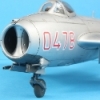


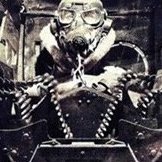
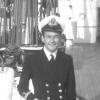


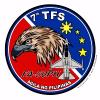
.thumb.jpg.d17ff607fc7e89ed057e63fcb6f2a888.jpg)
